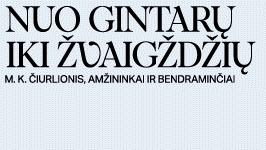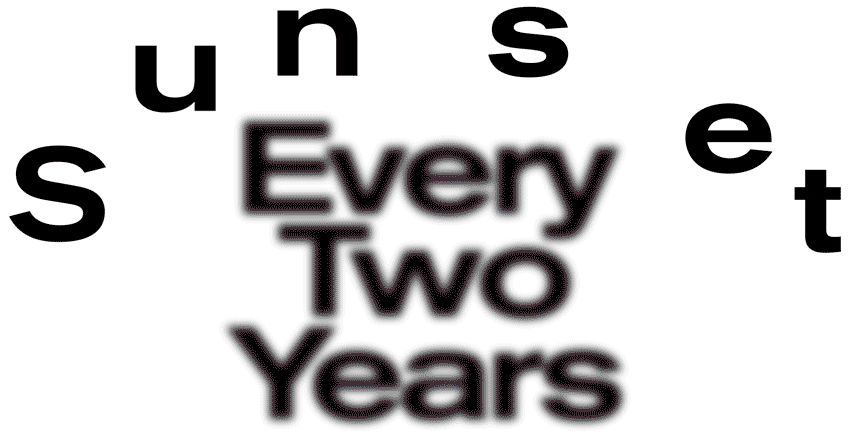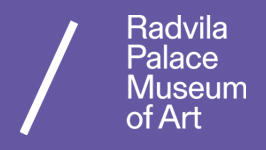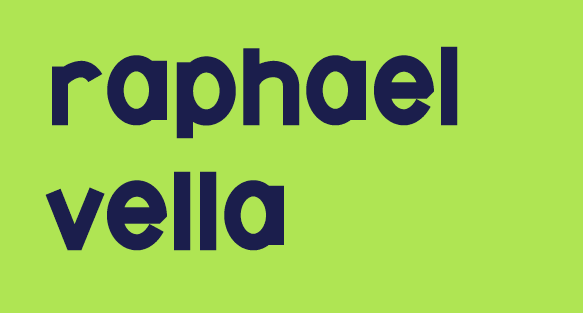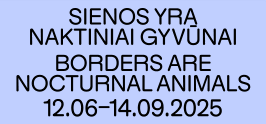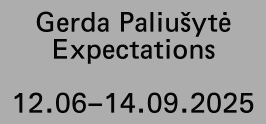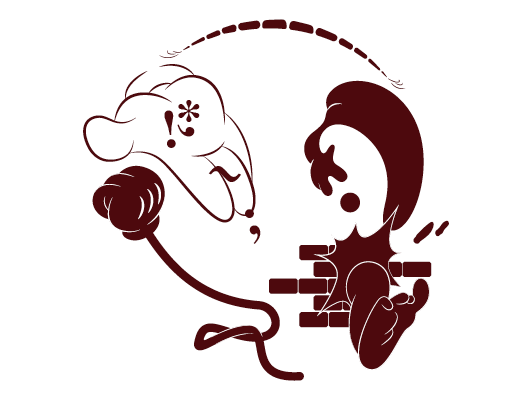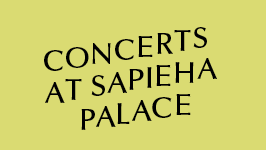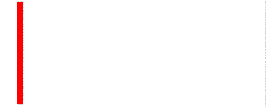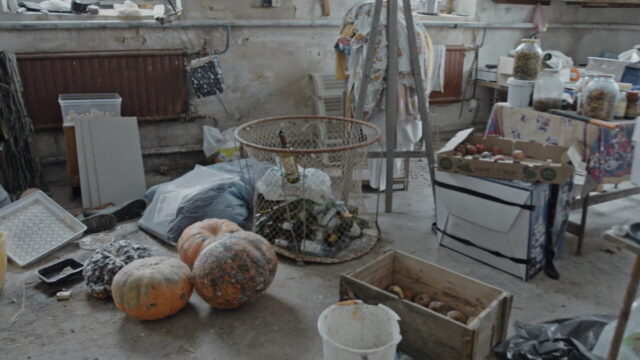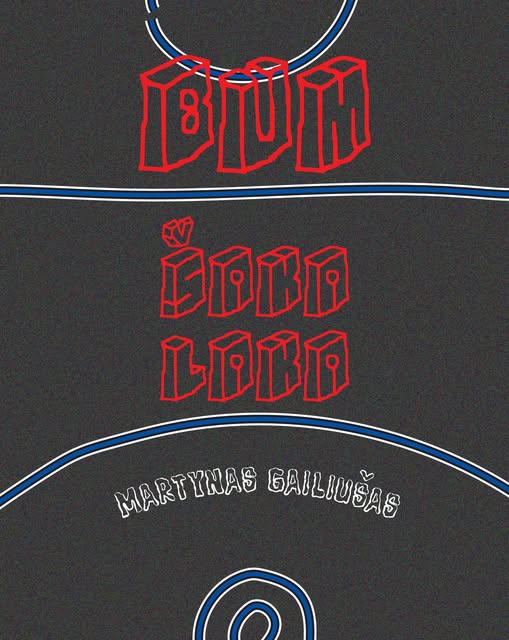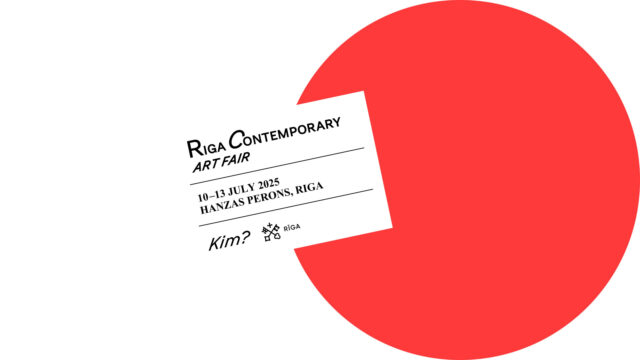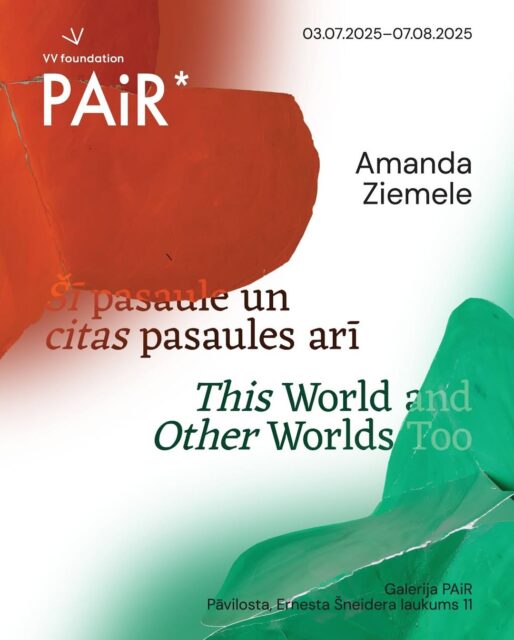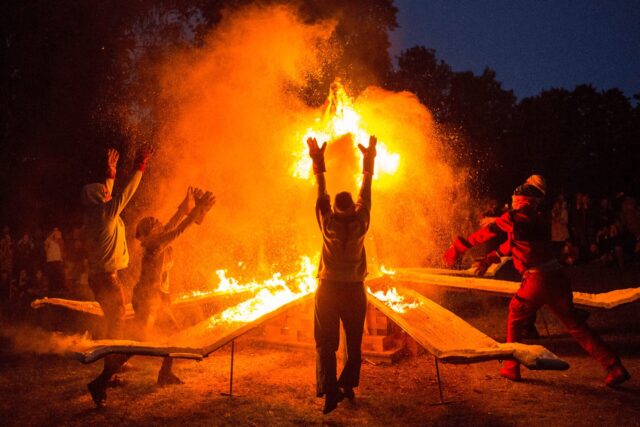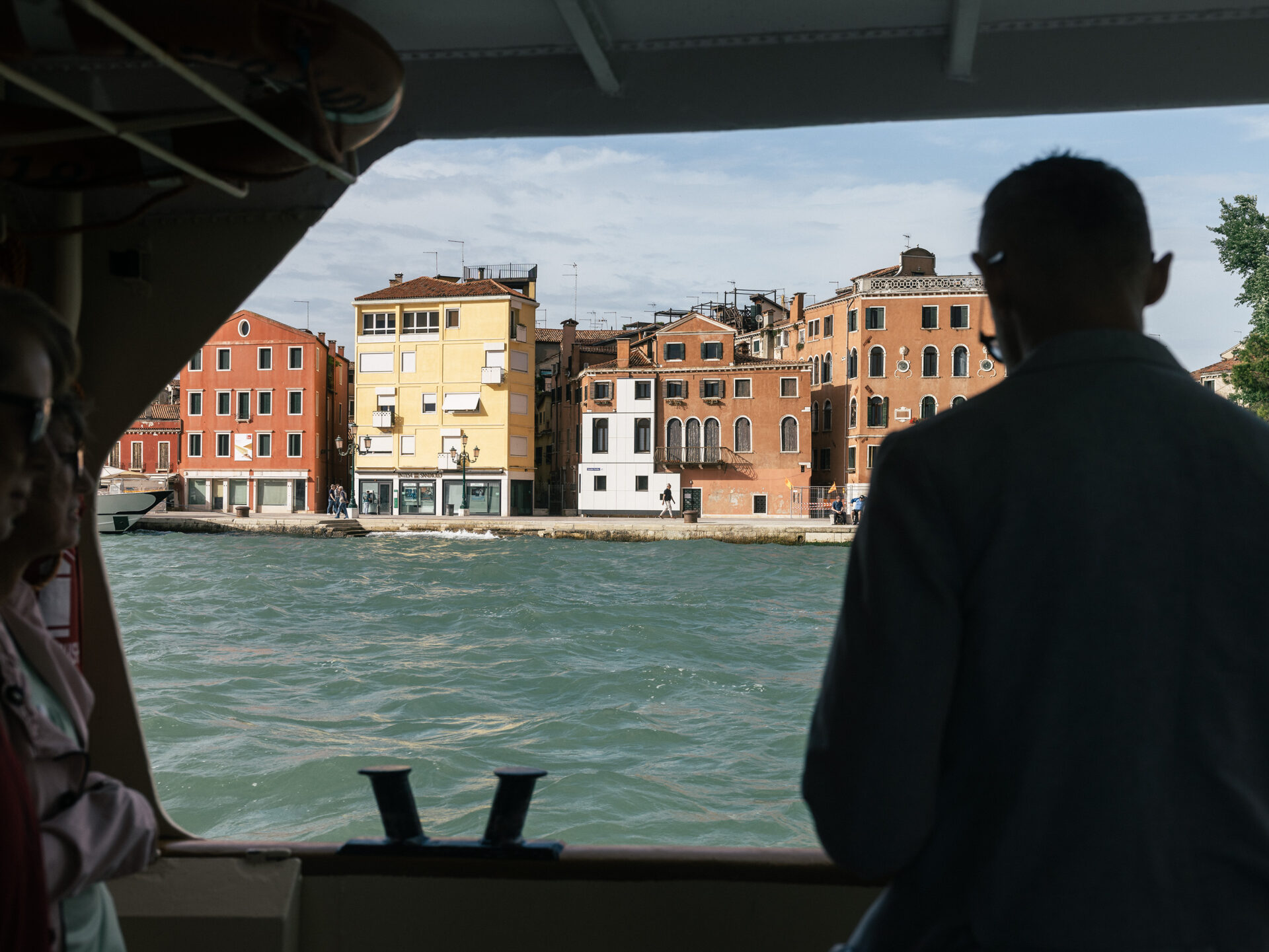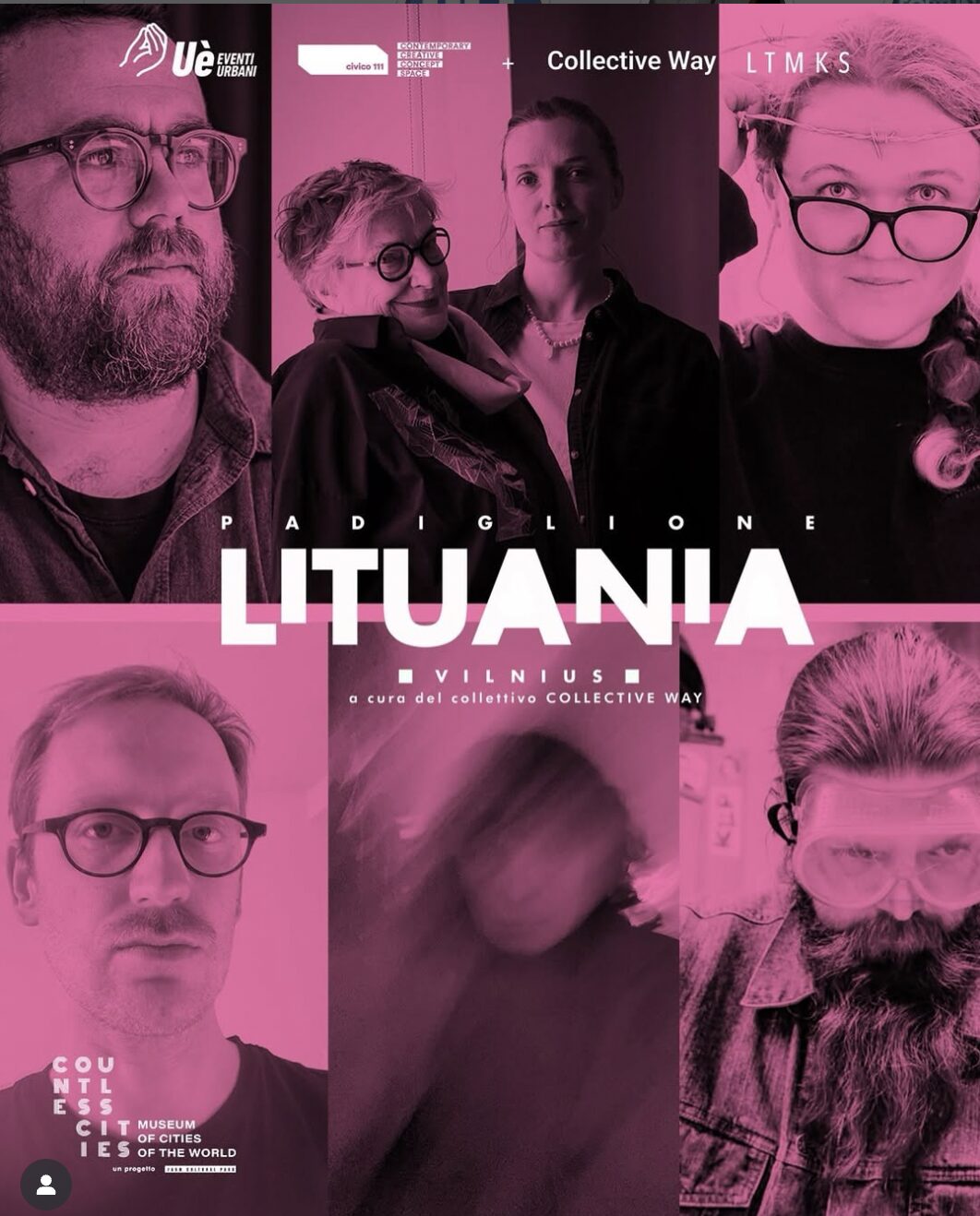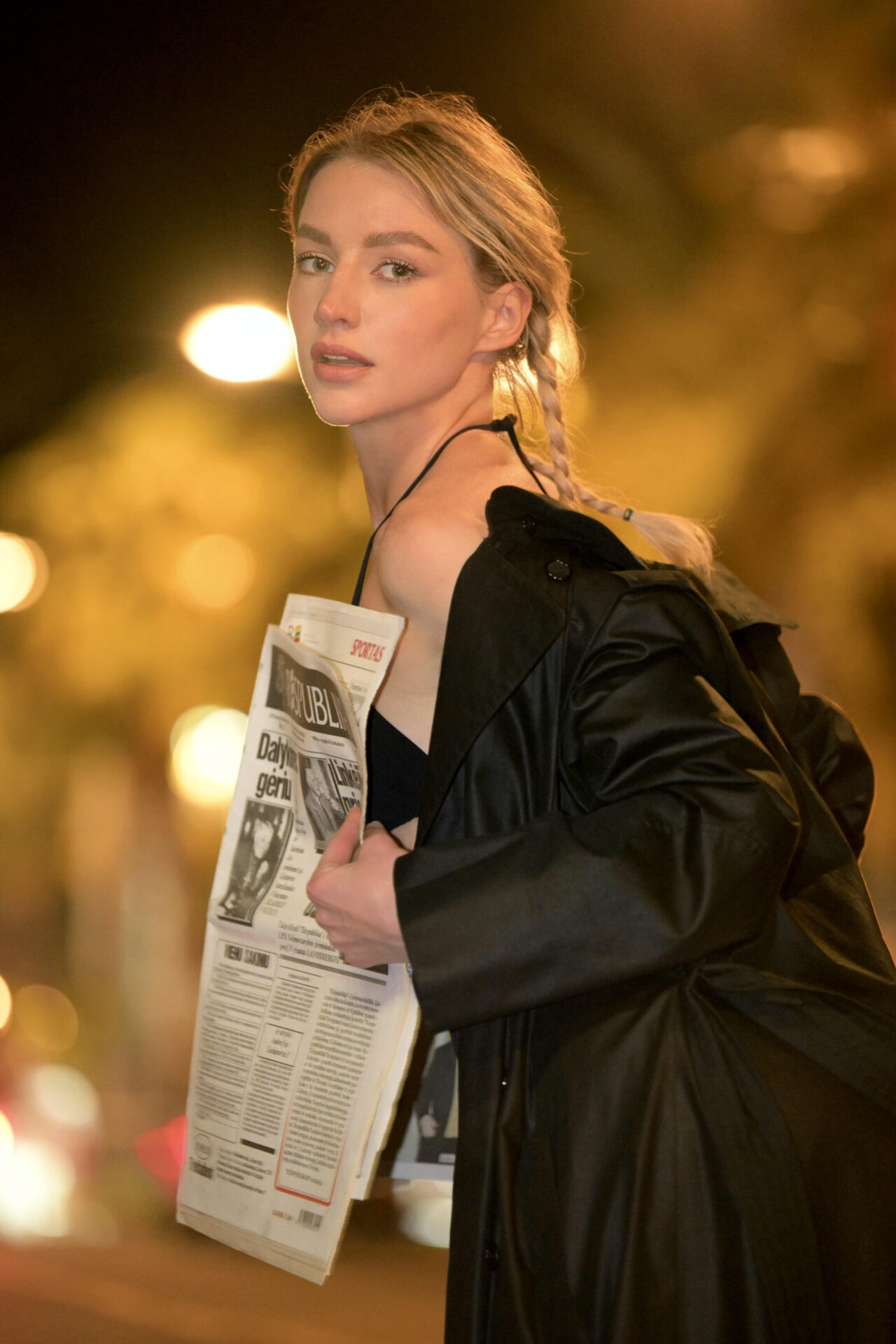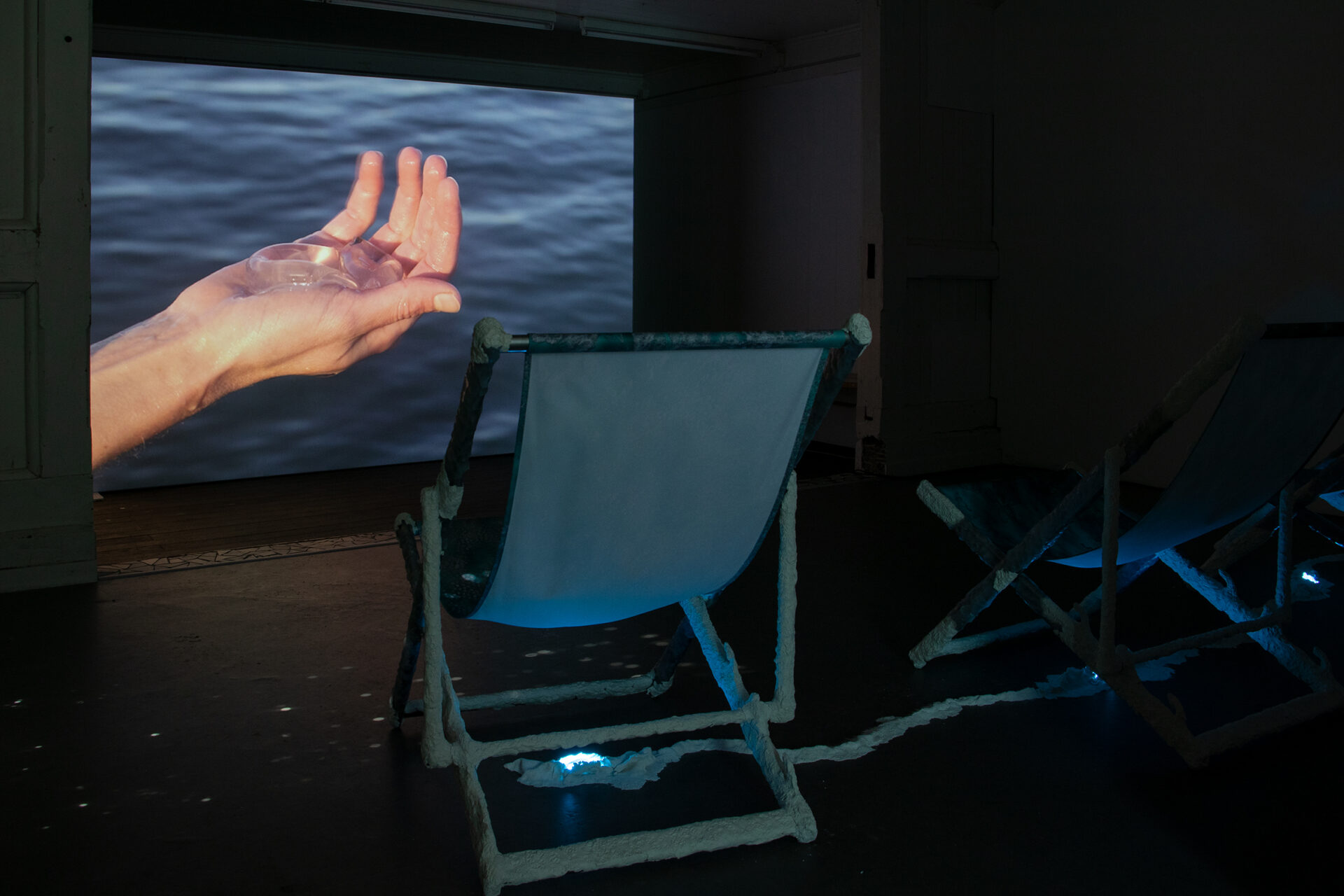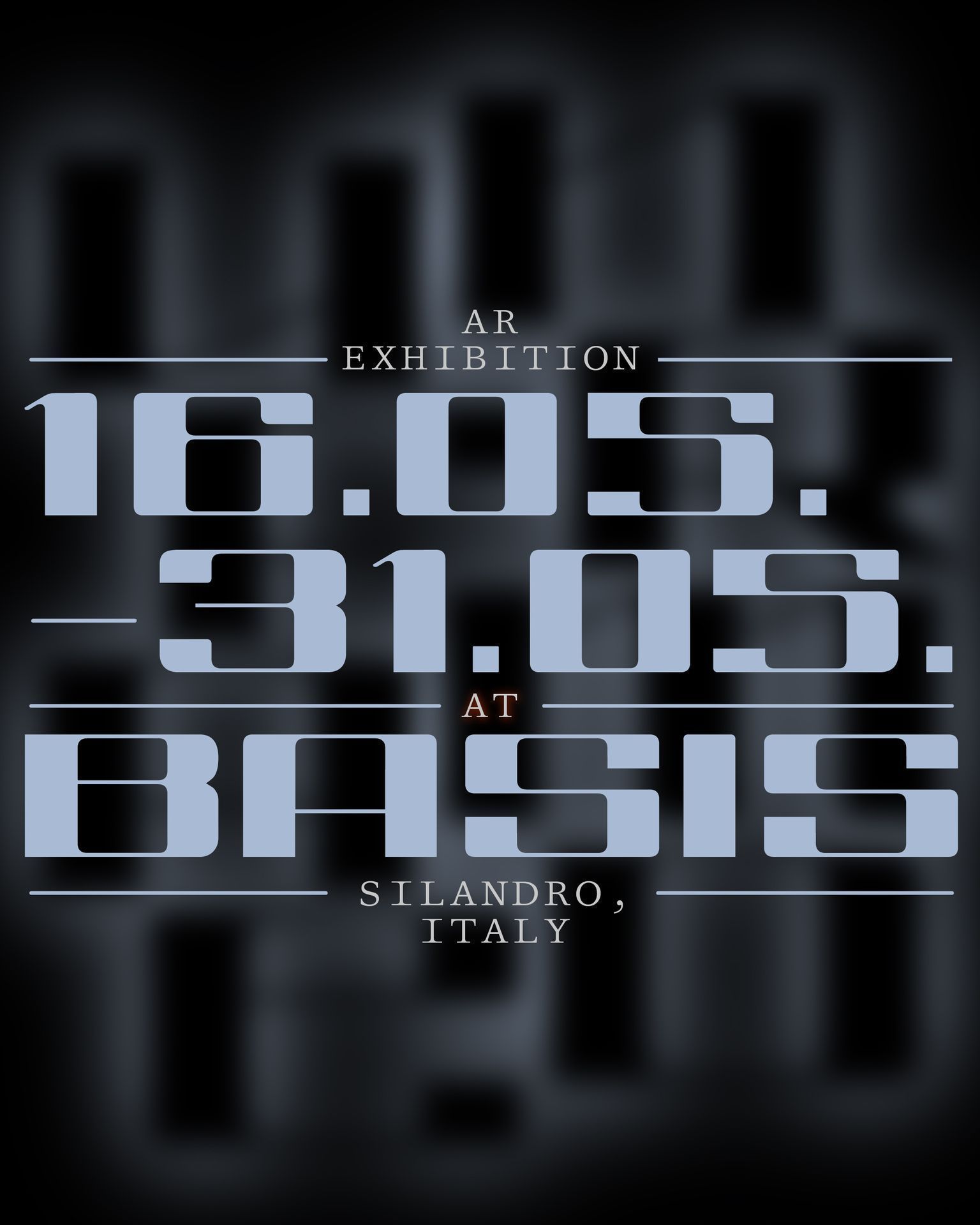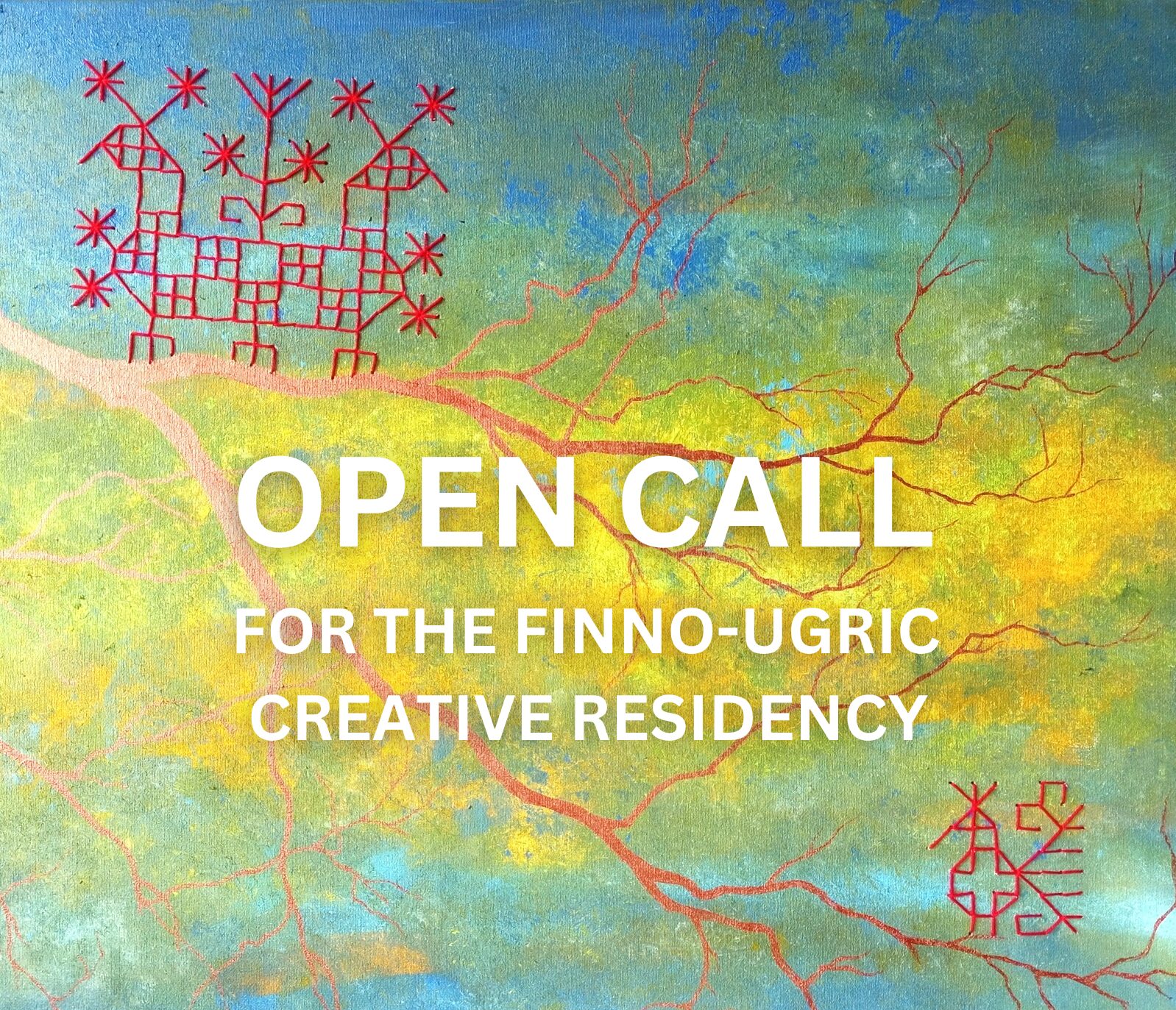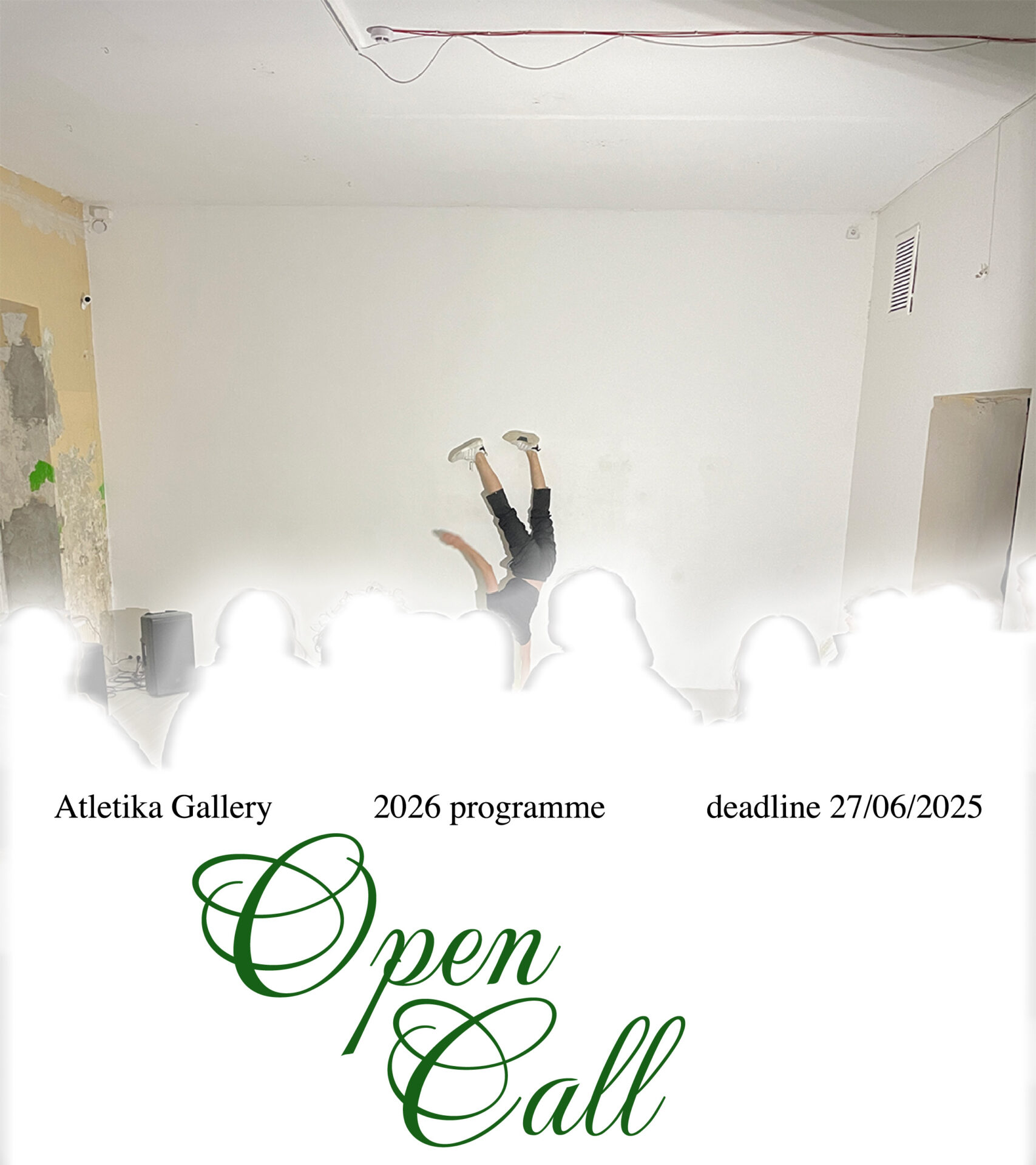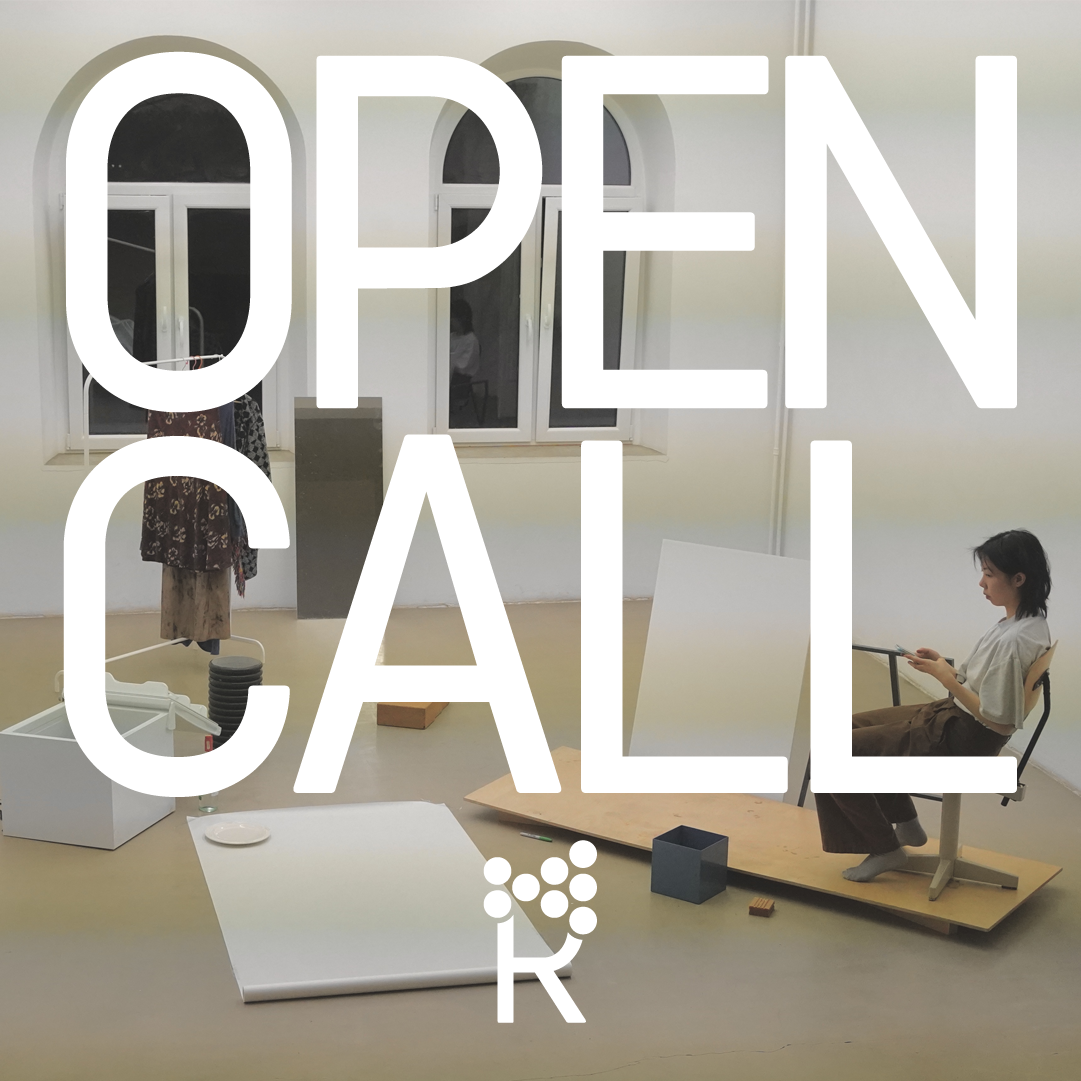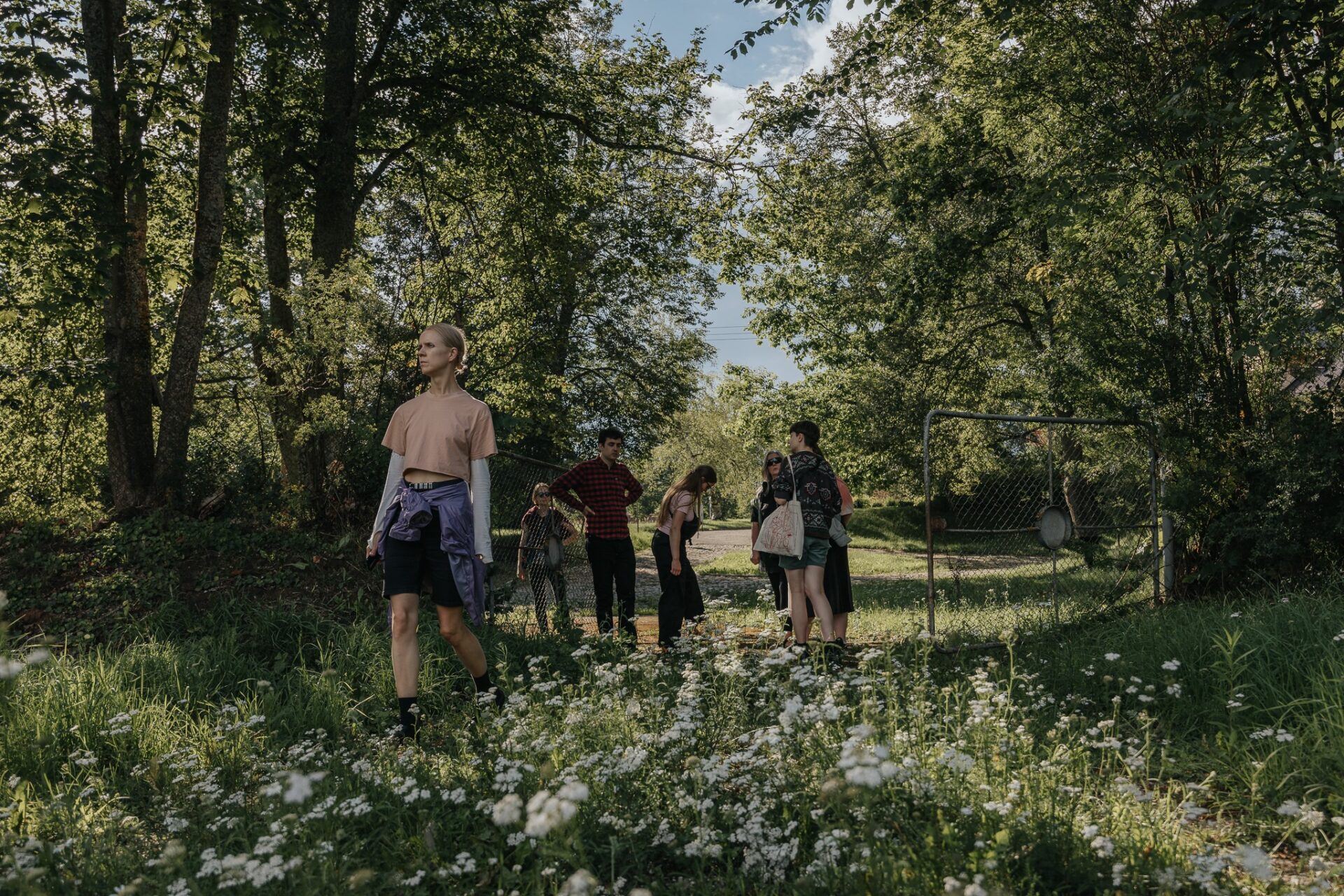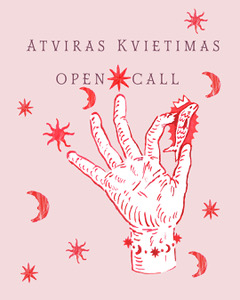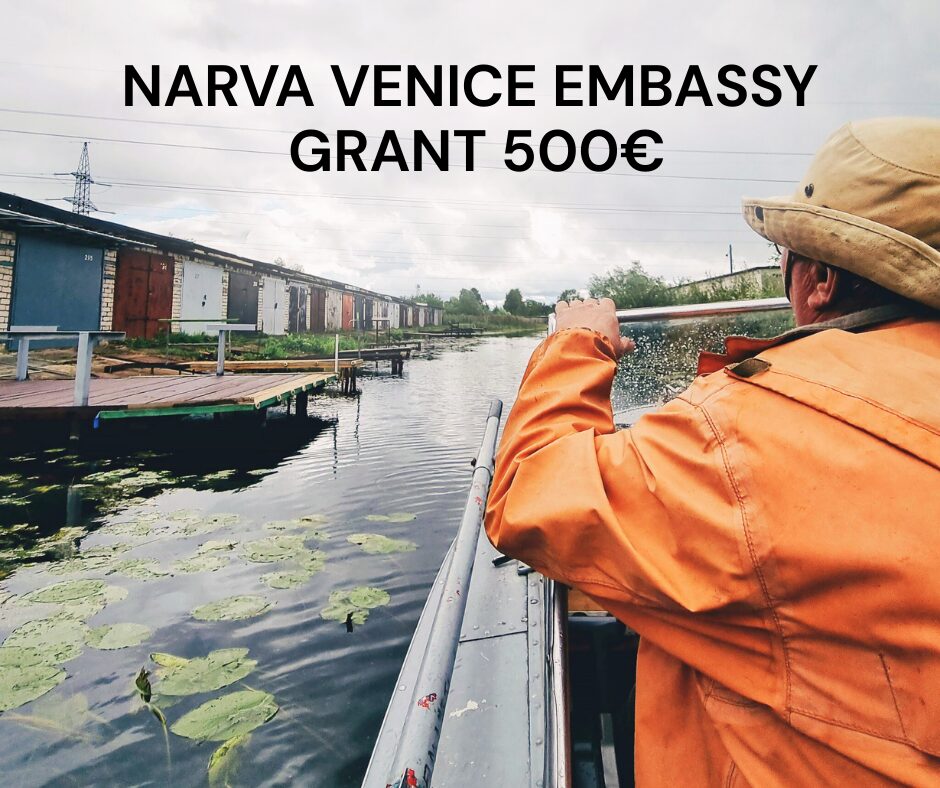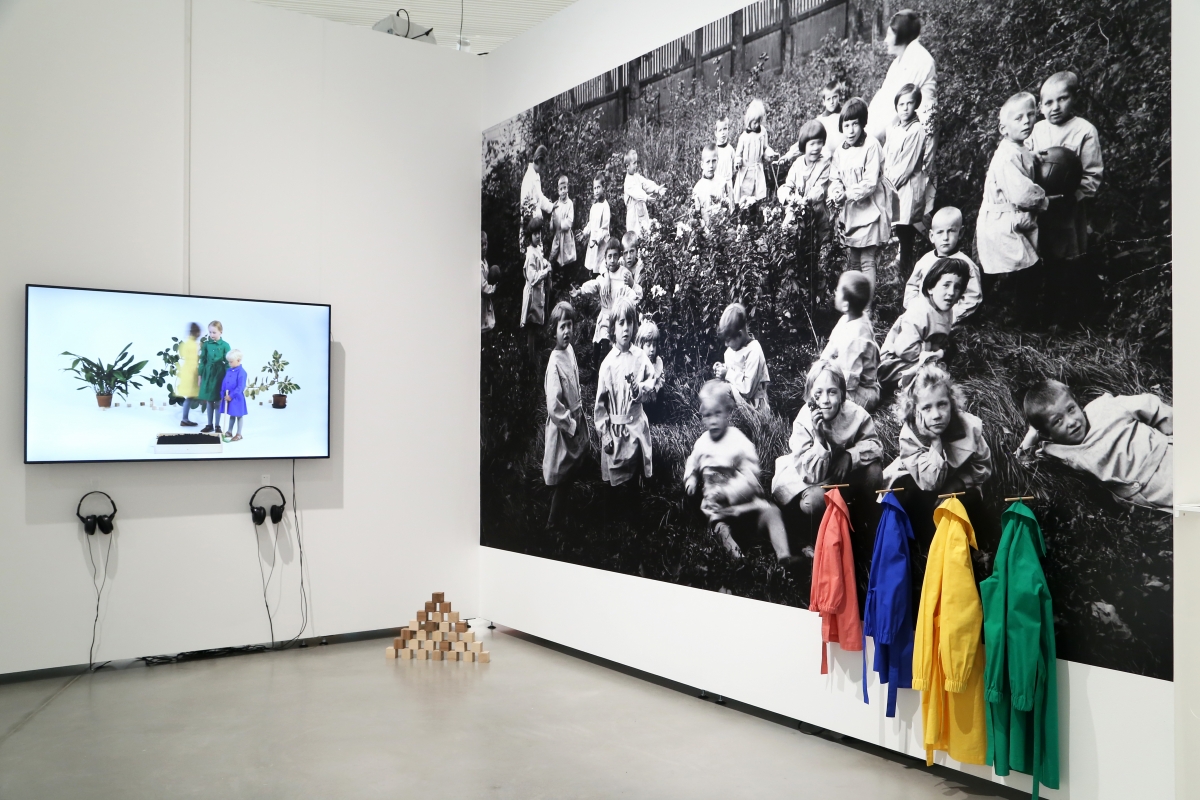
Ieva Epnere, Green School, 2017. Photo: Margarita Ogoļceva, 2018, Latvian Centre for Contemporary Art
The exhibition ‘Portable Landscapes’ (Latvian National Museum of Art, 27 April to 17 June, 2018) focused on a rather unexpected, or at least eclectic, selection of Latvian exile and émigré personalities, and placed their stories in the broader context of the current topics of migration, globalisation, and, of course, contemporary art. It was put on at the Latvian Centre for Contemporary Art (LCCA), and curated by a team of five curators (Solvita Krese, the head of the LCCA, Inga Lāce, Diāna Popova, Andra Silapētere and Antra Priede-Krievkalne). The list of participating artists includes 35 artists or artist groups
To be frank, an exhibition with more than one curator sounds like a recipe for disaster. Five curators sounds like a catastrophe. Not for this exhibition, though! At least, not this time. The exhibition was structured by focusing on five places around the globe, each of which had its own curator, and its own central personality around whom the story was told. For example, Berlin and Valdis Āboliņs was curated by Anta Priede-Krievkalne. Gotland and Laris Strunke was curated by Diāna Popova. The star was then backed up by a selection of his or her contemporaries, as well as commissions and works by (mostly Latvian) contemporary artists. Some, but not all, the artists in the ‘supporting roles’ are émigrés themselves. I will return later to the feature of the impossibility of making generalisations while describing the project, and explore it in detail.
Their connections to the places are as diverse as the stories are. For example, Inga Meldere is a Latvian living in Helsinki together with Mikko Hintz. In 2017, they took part in a research residency in Gotland, and came back from a field trip with a weird kind of typography of Nordic home design. Margo Zālīte, on the other hand, has been travelling between Berlin and Riga to the point where she has lost the ability to enter buildings, she just jumps back from any door she tries to go through. In Estonia, when somebody leaves a door open after entering a room, he is asked: Were you born on a tram? This refers to the tram doors, which open and close automatically. In order to watch Zālīte’s video Fluxus Nano Opera. ‘At Home / Not at home’ (2018), one had to go through tram doors that opened in all four directions. It could be that her actual problem is not entering but exiting the transition zone that has become her place of birth.
Andrejs Strokins, who has stayed in Latvia so far, has a rather ironic view of the history of the diaspora, as one would expect from a non-émigré. His collection of found photographs depicting children in schools, performing simple choreographed poses for the camera, seen in the context of the exhibition, is first of all like a mockery of émigré communities, which try hard to preserve the old domestic culture abroad, through educational and community-based cultural activities, which inevitably start to resemble country theatre.
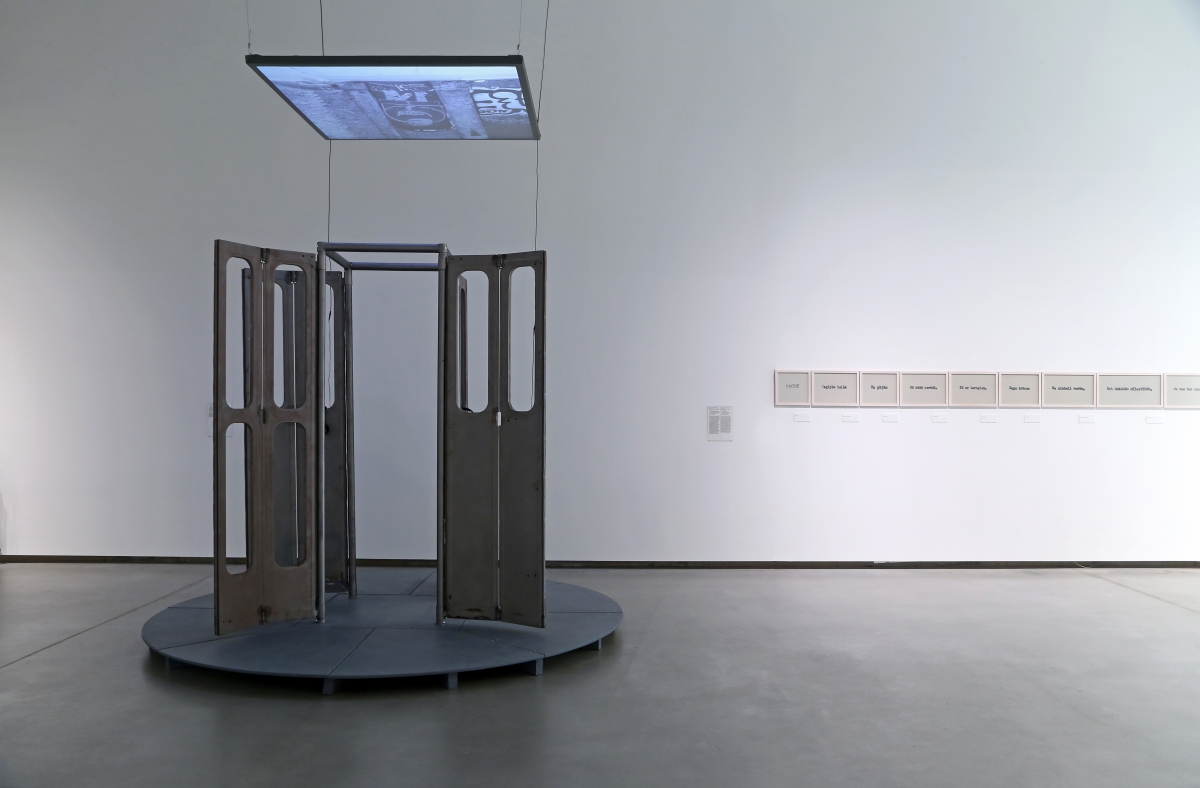
Margo Zālīte, Fluxus Nano Opera “At Home/Not at Home”, Photo: Margarita Ogoļceva, 2018, Latvian Centre for Contemporary Art 2018
In the leading role
The leading figures were as mixed as the approaches of the artists in the supporting roles were. Refugees were mixed with émigrés and expats. The nostalgic longing for home was compared with utopias and stories of political change. For example, the painters Laris Strunke and Enno Hallek represent, with their abstract paintings in the Gotland part of the exhibition, a quiet, personal resentment, as their works are introduced by the now again topical image of the refugee boat. The abstract studies by Zanis Waldheims, who ended up in Montreal, are led by a modernist dream of synthetic universal abstractionism, as a tool for solving the sufferings of mankind.
The utopian belief in the future, with a romantic longing for a lost paradise, based on the idea of the supremacy of Ancient Greek culture, was cultivated in the Academia in Paris. This institution resembling a commune was led by Raymond Duncan and his wife, the Latvian dancer, poet and translator Aia Bertrand, who left Latvia at the beginning of the 20th century of her own accord, and therefore is an expat.
Genius Loci
Each of the chosen places told its own story: Berlin is a divided city, Gotland is a refugee island, Paris is a romantic dreamland, New York is a cool place, and Montreal is the New World. To some extent, these identities are repeated through the personal dramas of the artists selected; in other cases, they are made fun of. Elske Rosenfeld’s video A Bit of a Complex Situation (2014) is an edited snippet from a recording of the Central Round Table meeting in East Berlin at the end of 1989. It is a glimpse of a historic event. The editing, which centres on the way power relationships are played out through body language, has a strong personal point of view, which correlates nicely with the intention of Klaus Freymuth, the original author of the footage, who apparently chose the position of the camera to reflect his political views. The work feels emotionally altogether very sincere. At the same time, the Orbita group’s video Hell’s Kitchen: Excursion in Paradise (2018), about Latvian poets in New York, comes across as a parody. It is a psychogeographical trip on the daily paths trodden by Latvian poets, in which New York has been projected on to Riga. I could not understand all the video, due to the language barrier, but I am quite sure I am not too far off the target when I claim that this was a rather tongue-in-cheek approach to chapters in cultural history which tend to be overly glorified. Or maybe the irony was directed more towards the notion of the grass being greener on the other side: New York as a cult place, from post-Second World War times until today.
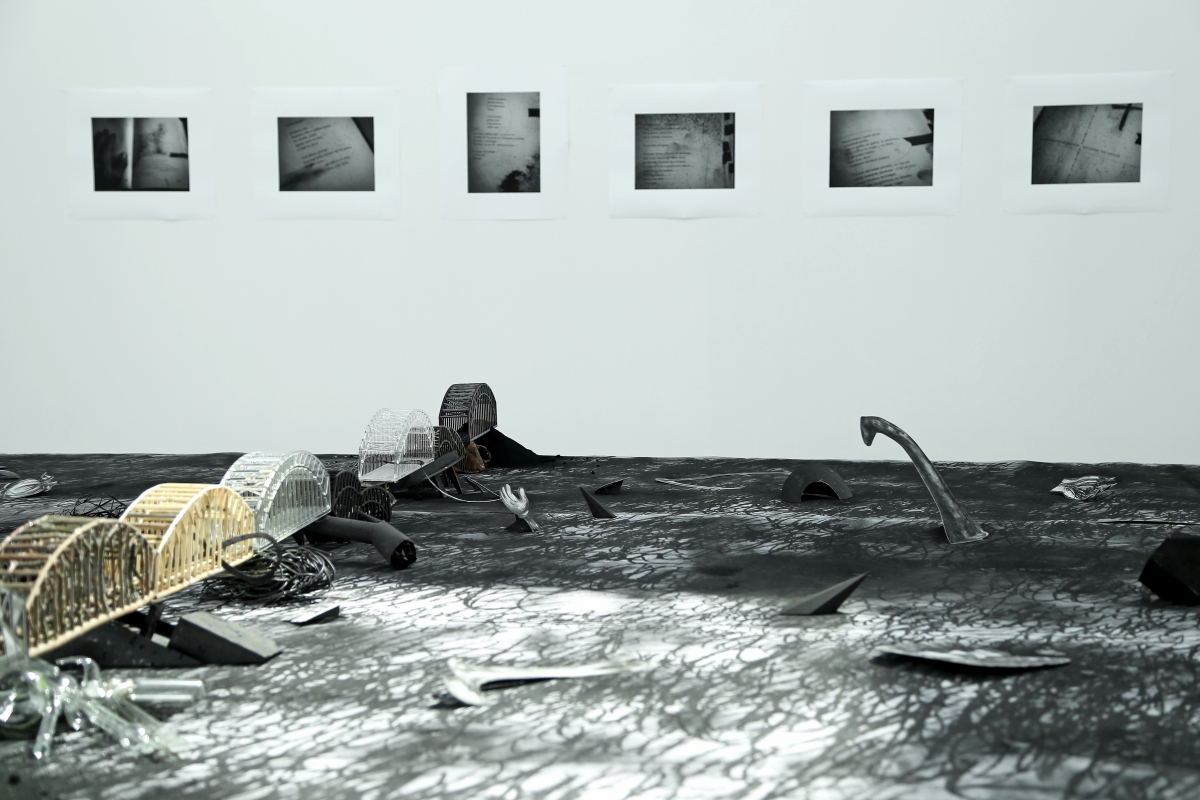
Artūrs Virtmanis, On the Bridges of No Return, 2018. Photo: Margarita Ogoļceva, 2018, Latvian Centre for Contemporary Art
This trait is summarised, without much humour, by Artūrs Virtmanis’ installation On a Bridge of No Return (2018), which makes, I guess, a self-critical but rather merciless take on homesickness. Virtmanis has been living in New York for more than 20 years, so I am confident about his perspective, but since he is an expat rather than a war refugee, I would question whether he is not being unfair towards his predecessors. But I hope I am wrong, and that he is just protecting himself and his saneness by refusing to dwell on nostalgia. The two images he has apparently taken with him from his childhood are of the destroyed iron bridge over the River Daugava, and the spire of St Peter’s Church collapsing in flames. It is symbolically important in this context that, as the display from the Latvian Museum of Photography proves, the most iconic image of the collapsing tower is a montage. It is not that the catastrophe did not happen, but the contemporary imagery of the event is altered, to say nothing of the image in the subconscious of Latvians. Virtmanis, in turn, deconstructs the image of the destroyed bridge in a similar way, too. The former iron bridge over the Daugava transforms in his installation, arch by arch, from iron to glass to wood to cardboard to paper. Virtmanis summarises it like this: ‘The final section, drawn in charcoal on paper, takes us metaphorically from This Side to the Other Side, from consciousness to unconsciousness … It takes us in a direction from which there is no return.’ So the image of the collapsed bridge is a dangerous image. Virtmanis says he is ‘simultaneously confused and charmed by the impulse to create art in situations where it could be called … pointless’. For a poet to write in Latvian while living in New York seems, as Virtmanis says, ‘a strangely absurd act of protest against injustice on a cosmic scale’. The bridge he created is crossing over the ‘Hell’s Kitchen émigré poet Gunars Saliņš’ boiling stream of words, but ironically this is not the escape route that Virtmanis has been looking for, because the bridge, which as an engineered and rational construction is supposed to oppose the uncontrollable poetic stream and allow safe passage over it, still ends in an unconscious longing.
If it was so simple
Despite the typologies of artistic approaches outlined above that occur in the exhibition, there is actually no reason to talk about the exhibition as a contemplation on different destinies and personal approaches to emigration. Quite the opposite, the presumed reasons for the choices of artists in the exhibition were so diverse it became at times very difficult to follow the curators’ train of thought behind each individual choice next to the rather small amount of genre typological works, like Kristina Norman’s video Common Ground (2013). A selection of interviews with contemporary refugees waiting for a decision in Estonia is interspersed with interviews with Second World War Estonian refugees in Sweden. And another picture book example would be Bita Razavi’s auto-portrait series Pictures from our future pictures from our past (2015-2017), where images of abandoned houses are coupled with xenophobic images of the future, where Estonians, whether russified or despite the lack of sun, have exchanged their light skin for a darker one.
A separate genre could also be homages to the central authors, like Ieva Balode’s Equal Tense (2017-2018), a dance performance which at first glance might fool the viewer into believing it is historical footage, but on a closer examination is, due to its socially very engaged content, as contemporary as the design of the fanzine that the artist produced as a homage to the engagement of the Academia and Raymond Duncan with printing.
But all this diversity does not mean the exhibition was in any way difficult to follow as a visitor; quite the opposite, it was a picture book example of a rather classic way of storytelling. It is just that, from the point of view of the critic, the exhibition is conceptually difficult to summarise. Its branches reach out in so many directions, that as soon as one wants to make a generalisation, an exception pops up that breaks the flow of the critics’ self-asserting generalisations. So whatever model the critic, in this case myself, would claim the exhibition has chosen in order to build my criticism upon, it would turn out on closer inspection to be a simplification.
This is the magic of five curators each working on a separate exhibition. As the landscapes in the exhibition are portable, so are all the parts of the exhibition. Four out of the five parts will be sent as satellite exhibitions to locations in Paris, New York, Gotland and Berlin. This makes the potential reception of the whole project impossible to grasp beforehand, as it is rather difficult to imagine how the different parts work on their own so far from ‘home’.
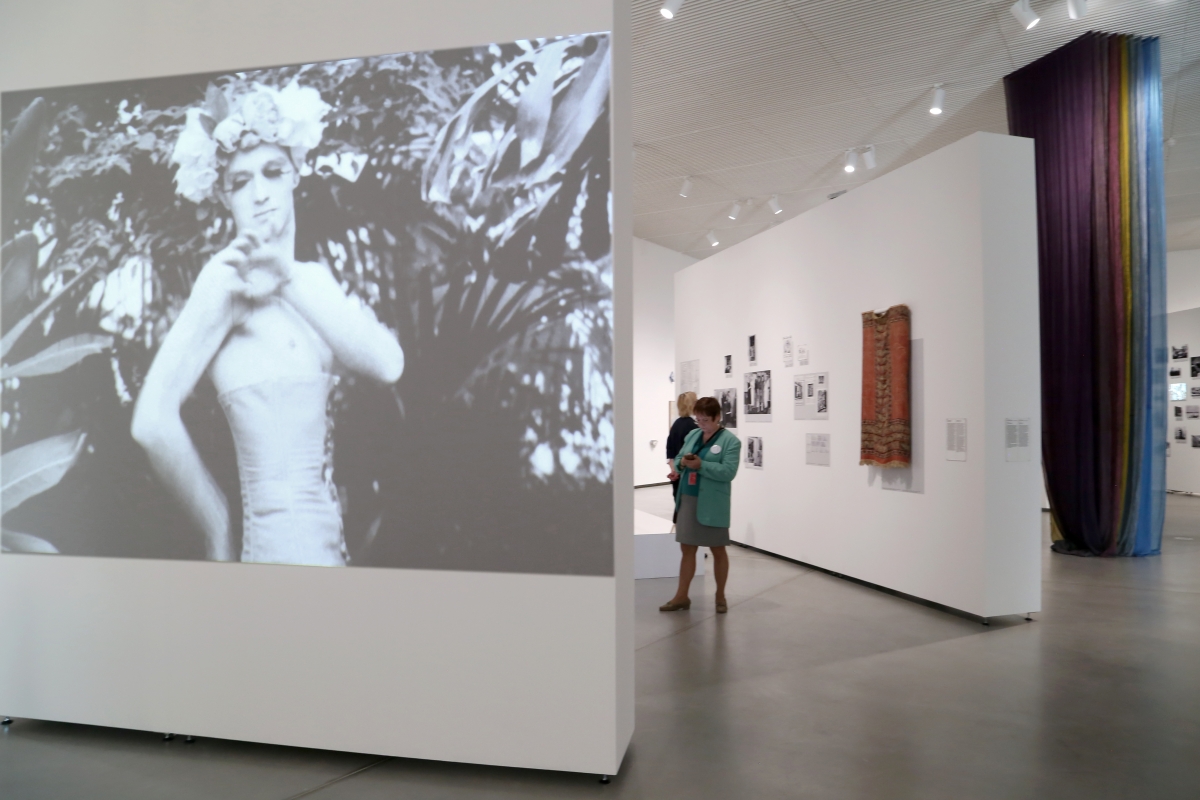
Ieva Balode, Equal Tense, 2017-2018.Photo: Margarita Ogoļceva, 2018, Latvian Centre for Contemporary Art
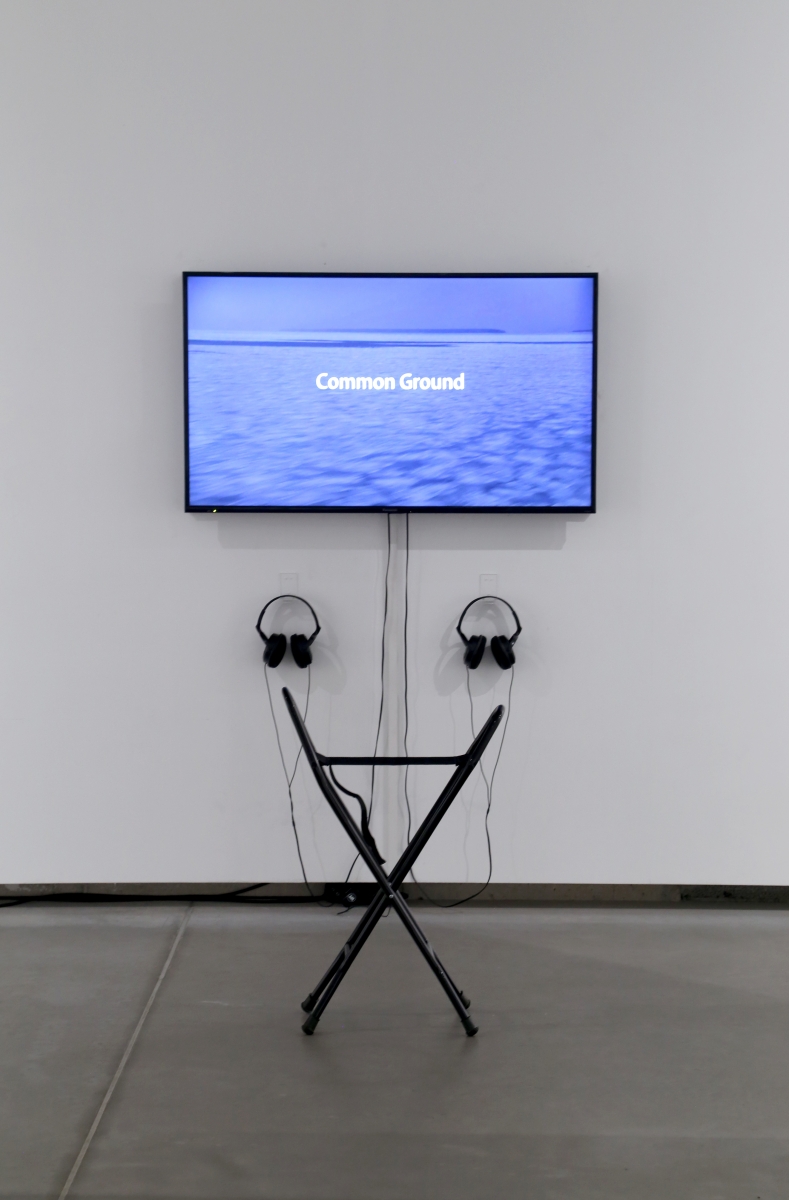
Kristina Norman, Common ground, 2013. Photo: Margarita Ogoļceva, 2018, Latvian Centre for Contemporary Art
Reading between the lines
Nevertheless, whoever searches finds. There are some characteristics which can be said to unite all the parts of the project. First, at the centre of all the stories are artists who left Latvia before or as a result of the Second World War … I guess the reader can feel my struggle when I make this point? During the Second World War … would be perfect, but the added before, as is the case with the dancer Aia Bertrand’s migrating to Paris, breaks my storyline. But still, the exhibition has chosen as its central figures people who can be described as part of cultural history.
Secondly, the exhibition is first of all a search for a connection in art history. But not just any history. As the curators have ‘admitted’, the exhibition focuses on artists and artistic practices which could be interpreted as valid in the context of contemporary art. We might ask how adequate an approach to art history this gaze is. But at the same time, how adequate have the previous looks at émigré art been, which try to conceptualise exile artists as a nostalgic parallel storyline which developed behind the Iron Curtain, and are a historical fact rather than an event in art history.
The third characteristic that seems to unite all the parts of the exhibition is revealed by the title of the exhibition ‘Portable Landscapes’. It seems to say more than the curators maybe wanted to admit about their intentions. At first glance, it is a symbol of the émigré taking with him or her the image of home. As an inspiration for the title, the choice might have been Enno Hallek’s literally portable, equipped with a handle, landscape paintings. But when the storyline is unravelled place by place, the landscape becomes a much wider symbol of a genius loci, which, I claim, says more about the viewers’ prejudices than about the place.
Emigrés are quite often depicted as people who look back at the home, whereas we tend to forget that we are looking at them from the home, and that where they are is a foreign country, about which we tend to have an understanding that is as romantic as their image of the home. Even though in the exhibition catalogue the curators speak about a need to consider history as something that should lie beyond the borders of nation-states, they seem to have a blind spot for the fact that not only others, but also they themselves, as native Latvians, have a distinct point of view, which is inevitably as portable as the émigré artists’ view. There is no escaping here.
An awareness of this situation does not seem to be at the forefront of the curators’ intentions. Many of the collaborating contemporary artists seem to have just that in mind, as was obvious, in my opinion, from Andrejs Strokins’ ironic selection of found photographs, as well as with Inga Meldere’s and Mikko Hintz’s collaborative research into Nordic design, described at the beginning of the article.
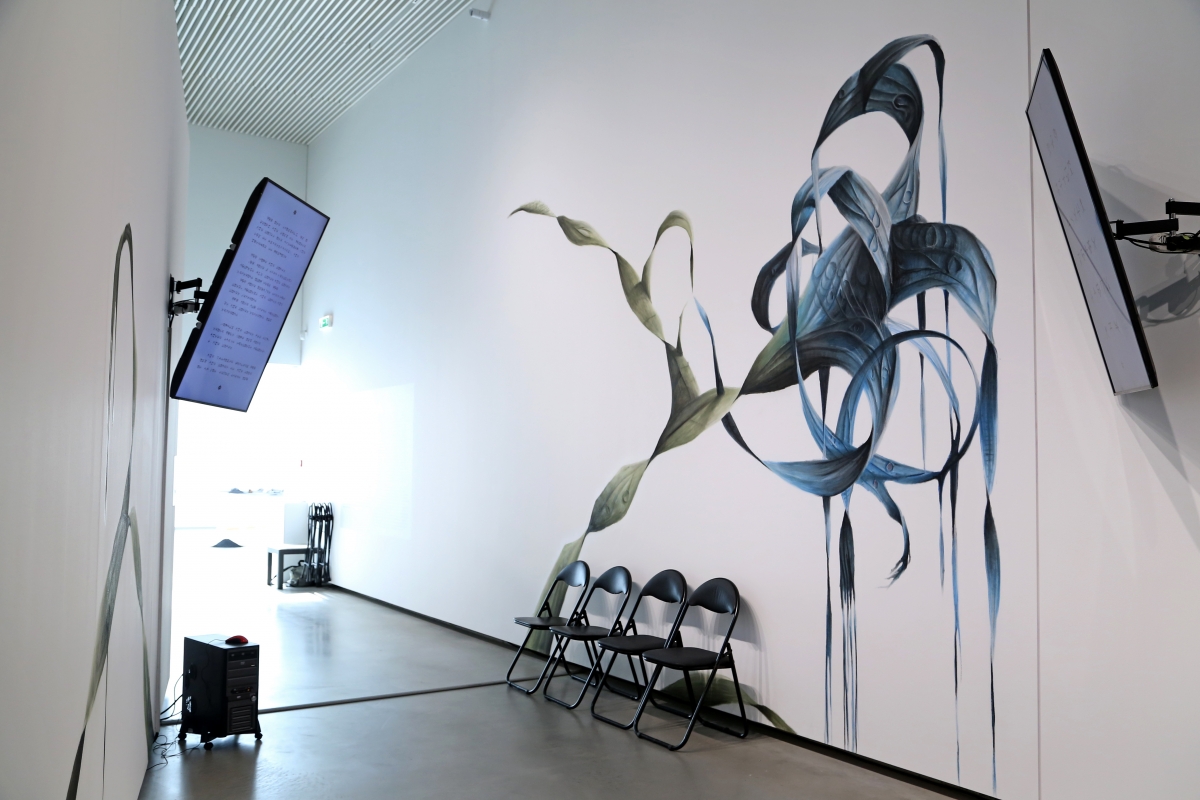
Viktors Timofejevs, Node, 2017-2018. Photo: Margarita Ogoļceva, 2018, Latvian Centre for Contemporary Art
The white spot
The mass migration from the Baltics during the Second World War is often compared to the current emigration from Syrian war zones. And this is the central drama of the ‘Portable Landscapes’ exhibition as well. The catalogue takes the issue to a higher theoretical level by suggesting the possibility to rewrite the history of the world, from the point of view of those who moved rather the ones who stayed. But this, it seems to me, is exactly where the exhibition falls short. By focusing on the dramatic migration of 1944, and referring to the Syrian refugee crisis, in my opinion it has a blind spot for the current migration from Latvia. There are expats like Virtmanis, Margo Zālīte and Inga Meldere participating in the exhibition; but where are the other homeless artists travelling from residency to residency, participating in the contemporary art exhibition trade in order to survive, where space is the most important term in the argot, but where time, being here and now, being contemporary, is the only acceptable ideology, forcing artists to discard any practice that might connect them with their home. We have to be normal (in accordance with the norm), not natural, as the Estonian critic Margus Tamm pointed out in the catalogue for the Latvian pavilion at the 57th Venice Biennial. Zālīte got stuck travelling, and feels in the overall context of the exhibition like one of the aforementioned forked branches reaching out in a sudden direction. This is an exception that prevents the critic from making generalisations.
And, going even further, where are the artists who have given up hope altogether of surviving professionally as artists, but instead of taking up an underpaid job at home, have moved away to work in factories elsewhere in Europe? When we talk about chapters in art history that have not been investigated, this is, in my opinion, the real blank spot on the map that has been declared a taboo topic. The curators of ‘Portable Landscapes’ have done their best to oppose the inevitable nationalist tendency that the notion of celebrating Latvia 100 brings with it, but it seems to me that they stumbled on the last step.
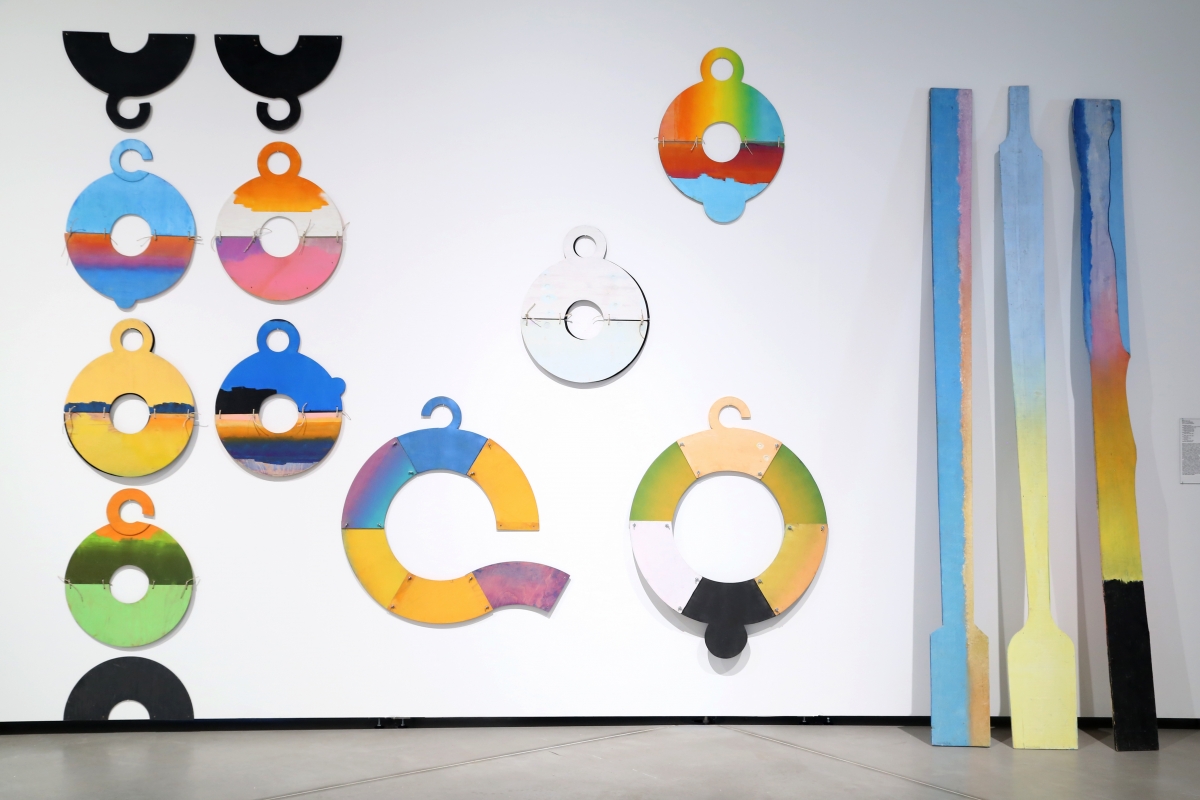
Enno Hallek, Portable Sunset, 1990-2018; Portable White Landscape With Shadow, 2000-2010; Portable Compact. Photo: Margarita Ogoļceva, 2018, Latvian Centre for Contemporary Art String, 1994-2010; Symmetrical Landscape, 1990-2017; Oar, 1982-1992; Heaven Scraper, 1083; Open String, 1994-2010.
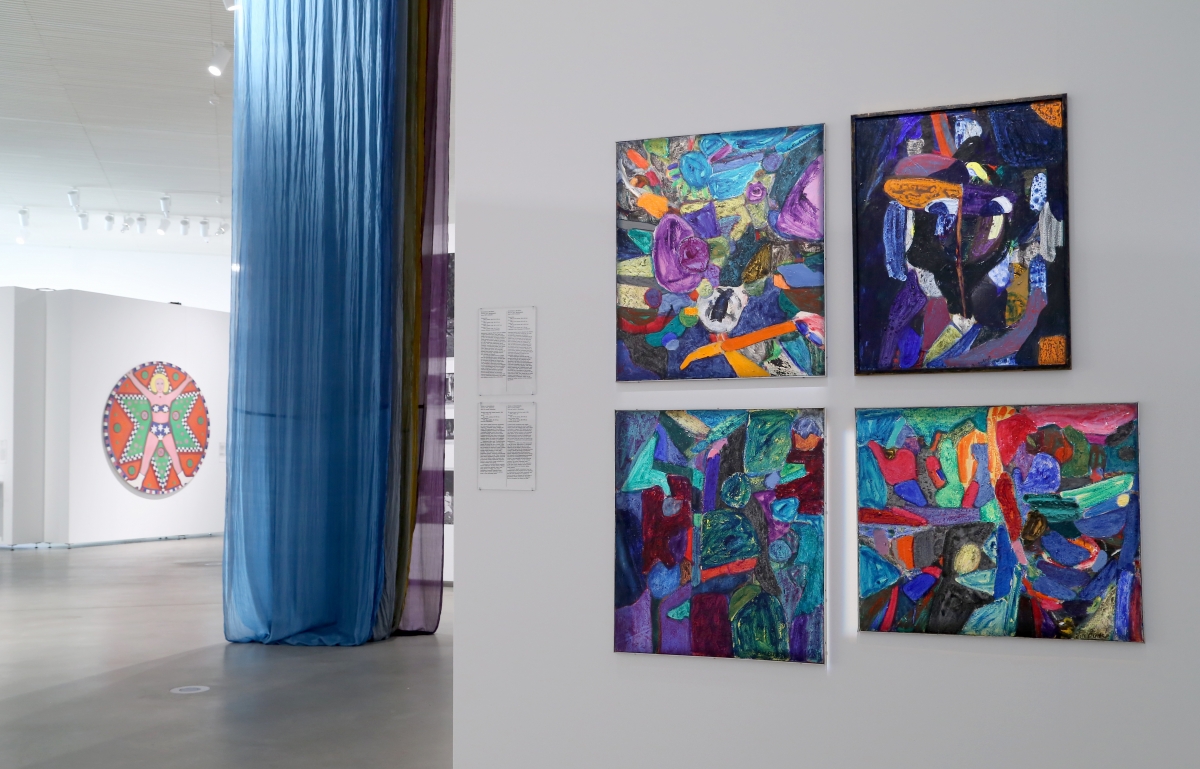
Eugenijus Budrys, Composition, 1988; Fie Lan. I, 1988; Central. II, 1988; Orange. III, 1988. Photo: Margarita Ogoļceva, 2018, Latvian Centre for Contemporary Art

